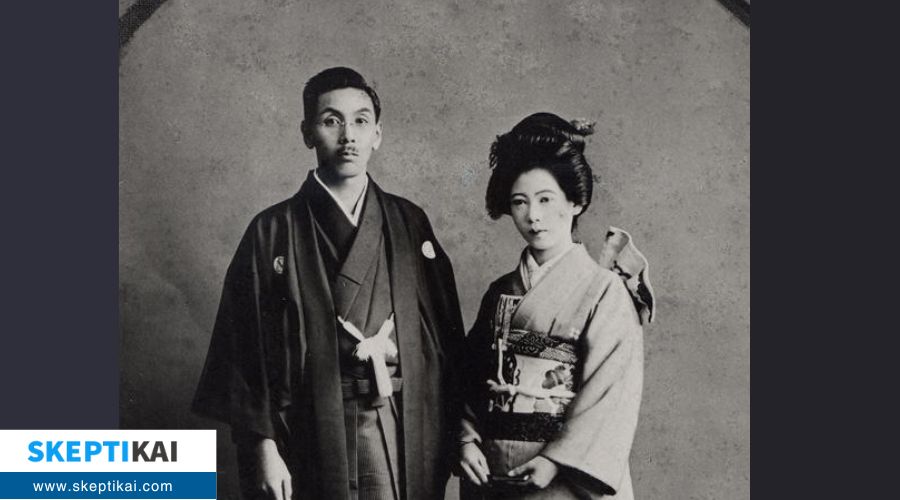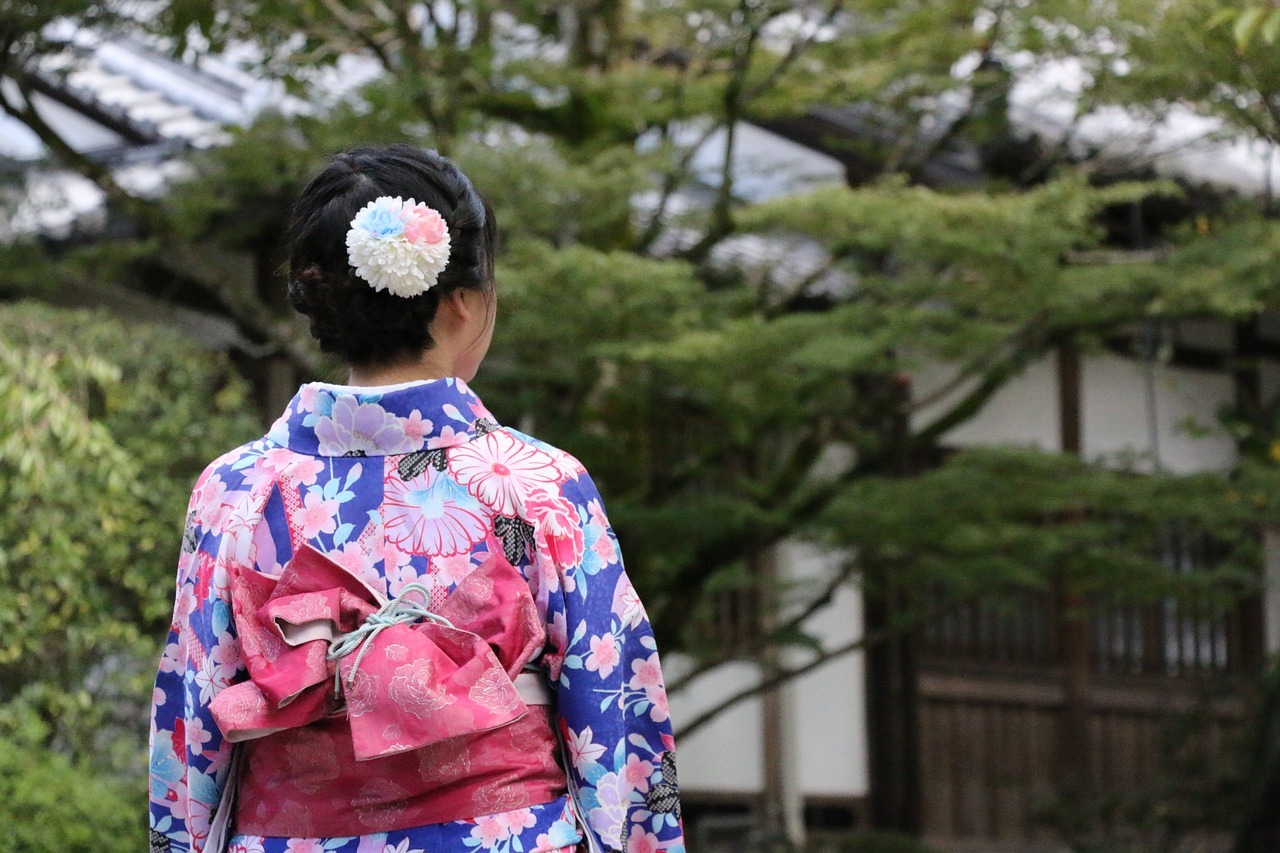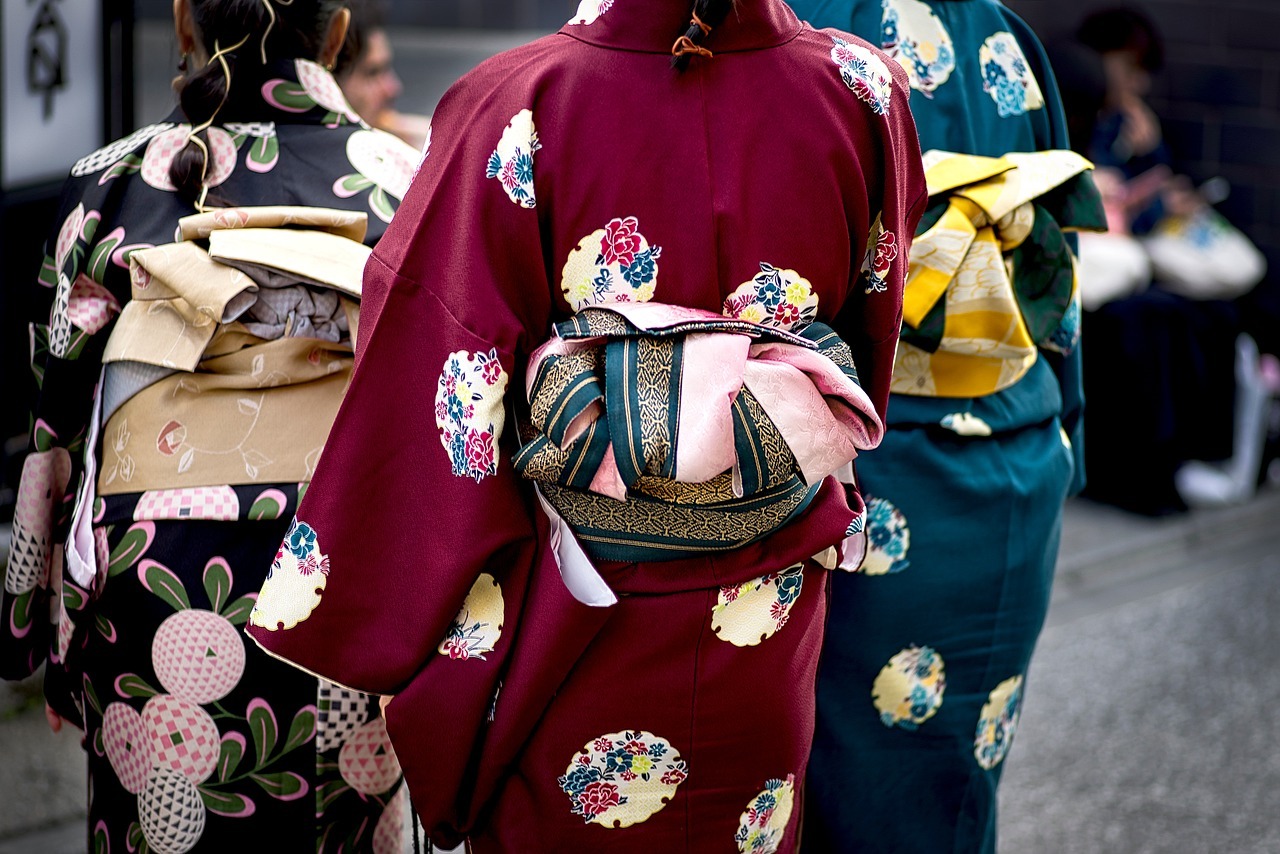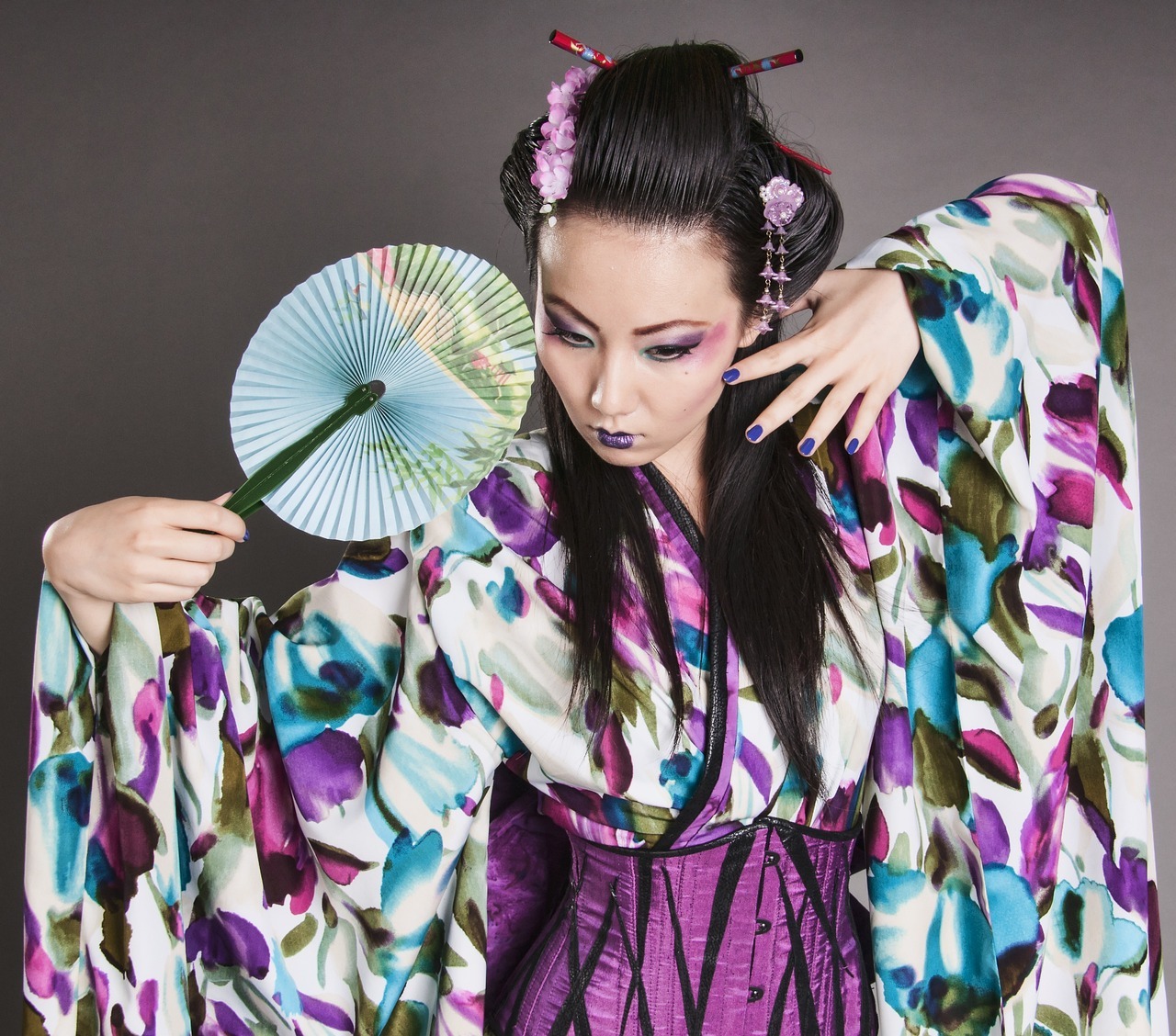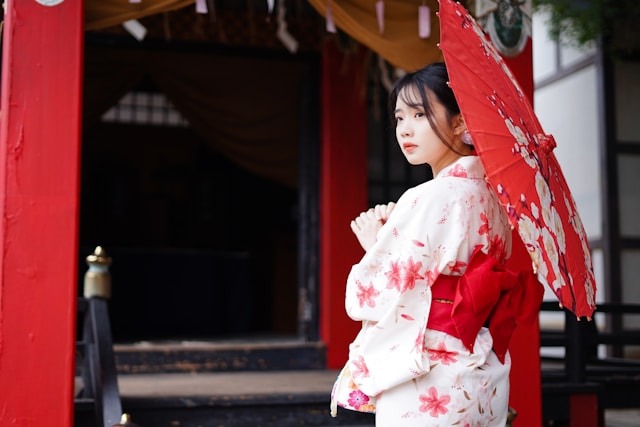(Photo: Japan; Kimono ensemble; Costumes)
Just as the cherry blossom is emblematic of spring in Japan, so too is the kimono a quintessential symbol of its tradition and fashion. You might already appreciate its beauty from a distance, but have you ever considered the layers of history and craftsmanship it embodies?
This garment isn’t just a piece of clothing; it’s a canvas that narrates stories of cultural identity, artistry, and innovation. As you explore the evolution and significance of the kimono, you’ll uncover how it continues to influence not only fashion but also the global appreciation of Japanese culture.
Why does this matter in today’s world? Let’s find out together.
Origins and Evolution
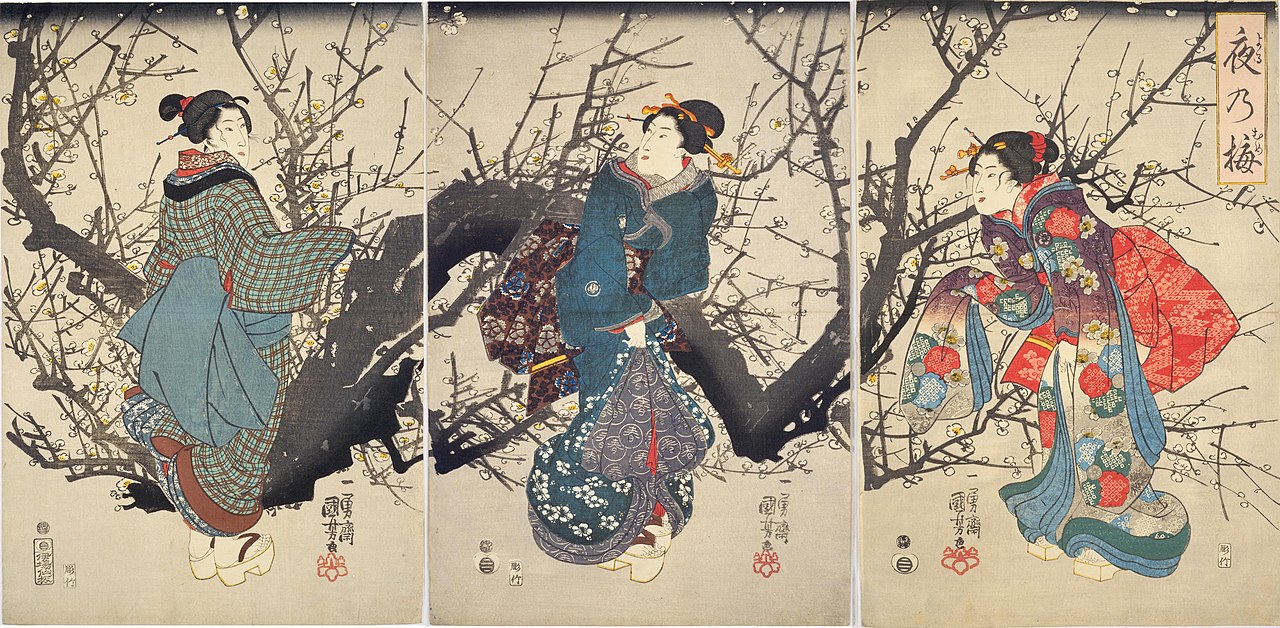
Tracing back to the Heian period, the kimono emerged from a single bolt of silk fabric, revolutionizing Japanese fashion over centuries. Initially, every Japanese, regardless of their social standing, wore kimono. However, as time passed, this iconic attire began to signify more than just daily wear; it evolved into a garment reserved for special events and ceremonies. This evolution is a testament to the adaptability and enduring relevance of the kimono in Japanese culture.
The introduction of the yukata, a lighter version made primarily for summer, showcases the kimono’s versatility. Unlike the heavier silk kimonos, yukatas are often crafted from cotton, making them more comfortable for the warmer months. This innovation allowed the kimono tradition to continue thriving, adapting to modern needs while retaining its roots.
Craftsmanship lies at the heart of the kimono’s allure. Creating a kimono requires not just skill, but a deep understanding of Japanese aesthetics and symbolism. The process is meticulous, with every stitch and fold imbued with meaning. This dedication to craftsmanship ensures that each kimono isn’t merely a piece of clothing, but a work of art, celebrating the rich history and intricate culture of Japan.
Symbolism and Design
Kimono designs aren’t just visually stunning; they’re steeped in symbolism, reflecting Japan’s rich cultural heritage and beliefs. When you slip into this traditional attire, you’re not just wearing a garment; you’re embracing a piece of Japanese culture, adorned with symbols that carry deep meanings. The Cherry Blossom and Pine tree motifs are prime examples of this intricate symbolism, making the kimono much more than just an item of clothing.
Here are three key aspects of kimono symbolism and design you should know:
- Cherry Blossom (Sakura): These beautiful flowers are a symbol of beauty and transition in Japanese culture. They remind you that life is breathtakingly beautiful yet fleeting, a concept deeply embedded in the ethos of Japan.
- Pine Tree (Matsu): Representing wisdom and fertility, Pine tree designs add a layer of meaning to kimonos. They symbolize long life and eternal youth, concepts highly valued in Japanese society.
- Patterns and Motifs: Beyond individual symbols, the overall design of a kimono reflects various virtues, seasons, and cultural beliefs. Each pattern tells a story, making every kimono a unique testament to the wearer’s identity and values.
In embracing the symbolism and design of kimono, you’re not only appreciating the aesthetic beauty of this traditional attire but also honoring the rich cultural heritage it represents.
Artisan Techniques
Beyond appreciating the profound symbolism in kimono patterns, it’s essential to understand the artisan techniques that bring these designs to life. These methods are not just about crafting clothing; they’re a way to preserve and celebrate centuries-old traditions. You’ll find that the creation of a kimono involves more than just sewing pieces of fabric together. It’s an art form, marked by meticulous hand-sewing methods and the use of traditional tools. Artisans undergo years of training to master these skills, ensuring each kimono is a masterpiece of craftsmanship.
| Technique | Description |
|---|---|
| Embroidery | Adds intricate details with needlework, enhancing beauty and texture. |
| Dyeing | Involves color application to create patterns, often reflecting nature and seasons. |
| Shibori | A tie-dyeing technique that results in unique, vivid patterns. |
| Weaving | Combines threads to produce the fabric itself, setting the foundation for further embellishments. |
These artisan techniques, from embroidery and dyeing to the unique shibori, are what make each kimono a unique piece of art. Employing these methods, coupled with the dedication to their craft, artisans ensure that every kimono narrates its own story, weaving tradition and fashion into a seamless tapestry.
Modern Interpretations
As fashion evolves, so does the kimono, blending traditional elegance with modern trends to meet contemporary tastes. You’re now witnessing an era where the kimono, a timeless symbol of Japanese culture, is undergoing a transformation that marries the old with the new in fascinating ways. Here’s how:
- Fabric Evolution: Modern kimonos now incorporate contemporary fabrics like polyester and cotton, alongside the traditional silk. This shift not only caters to a wider range of preferences but also makes the kimono more accessible and versatile for various occasions.
- Design Fusion: The patterns adorning kimonos today are a vibrant mix of traditional motifs, such as the Cherry Blossom, with modern designs. This blend ensures that each piece is unique, reflecting the wearer’s personality and the timeless appeal of Japanese aesthetics.
- Styling Innovations: Layering and accessorizing have become integral to kimono fashion, especially for special occasions and events. The modern interpretations of kimonos allow for creative expressions, ensuring you stand out while still paying homage to tradition.
Whether you’re attending a formal event or simply embracing the kimono for casual wear, the modern interpretations ensure that this traditional garment remains relevant and beloved in contemporary society. Through a fusion of tradition and contemporary elements, kimonos continue to be a significant part of Japanese culture and fashion, embodying a unique blend of the past and the present.
Global Influence
In recent years, the unique allure and craftsmanship of the kimono have captivated audiences worldwide, marking its influence on global fashion trends. This traditional Japanese garment has not only remained a significant part of Japanese society but has also seen a surge in global popularity. Its cultural significance, combined with its timeless appeal, has led international fashion designers to weave elements of kimono fashion into their collections.
| Aspect | Influence | Examples |
|---|---|---|
| Designer Collections | Incorporation of kimono aesthetics | High-fashion runways |
| Exhibitions & Shows | Global showcasing of traditional and modern kimonos | Art galleries, cultural events |
| Celebrity Influence | Celebrities and influencers wearing kimono-inspired outfits | Red carpets, social media posts |
| Cultural Resurgence | Increase in people wearing kimonos outside Japan | Street fashion, themed events |
This crossover has not only highlighted the versatility of the kimono but has also played a crucial role in bridging traditional and modern fashion trends. You’ll find more women wearing these garments, not just as a nod to their heritage but as a statement piece that transcends cultural boundaries. The kimono’s journey from the heart of Japanese society to the global stage underscores its enduring appeal and artistic value.
Care and Preservation
Caring for your kimono requires storing it in a cool, dark, and dry place to guard against discoloration and fabric deterioration. Since the Edo period, when wearing kimono was daily for many, to the Meiji period and beyond, the meticulous care and preservation of these garments have been integral to maintaining Japanese tradition.
To ensure your kimono remains in pristine condition, consider these steps:
- Regularly Air Out: Periodically airing out your kimono prevents musty odors and keeps the garment fresh. This practice was essential when women wore their kimonos frequently, allowing the fabric to breathe and retain its quality.
- Use Proper Storage Techniques: Avoid hanging your kimono for long periods to prevent stretching and distortion. Instead, fold it neatly or use padded hangers for short-term storage. This method helps preserve the fabric’s integrity, keeping in mind the delicate nature of traditional kimonos.
- Seek Professional Help When Necessary: For heirloom or particularly valuable kimonos, don’t hesitate to consult with professionals for cleaning and preservation. Their expertise ensures that these cherished pieces of Japanese tradition can be enjoyed for generations to come.
Future Trends
The future of kimono fashion is evolving, blending traditional designs with modern influences to captivate a new generation. As you dive deeper, you’ll find that kimono designers are at the forefront of this transformation. They’re daringly mixing time-honored patterns with contemporary styles and fabrics, introducing vibrant color combinations and motifs that resonate with the youth. This isn’t just about preserving Japanese tradition; it’s about redefining it for modern fashion enthusiasts.
Collaborations between renowned fashion brands and skilled kimono artisans are crafting unique, innovative pieces that stand out in today’s fashion scene. These partnerships aren’t only refreshing the kimono’s image but also ensuring its relevance in the global fashion industry. Moreover, the rise of kimono rental services is making these exquisite garments more accessible. Whether it’s for a wedding, a tea ceremony, or just a special day out, anyone can now experience the elegance of wearing a kimono without the commitment of purchasing one.
Online platforms are playing a crucial role, too, showcasing modern kimono styling techniques and inspiring a global audience. Through social media and fashion blogs, people worldwide are getting a glimpse into the versatility of kimono, learning how to incorporate this iconic garment into their everyday wardrobe.
Conclusion
You’ve journeyed through the kimono’s rich history, from its origins to its status as a global icon. You’ve seen how its designs tell stories and celebrate nature, and how skilled artisans keep traditional techniques alive. In modern times, you’ve witnessed the kimono adapt, merging tradition with contemporary fashion.
Its influence spans the world, yet it remains deeply rooted in Japanese culture. As you care for and appreciate kimono, you’re not just preserving fabric; you’re keeping a centuries-old tradition vibrant and relevant for the future.
